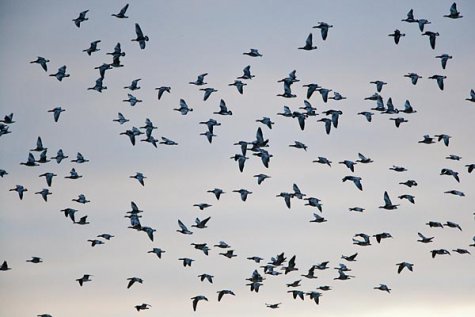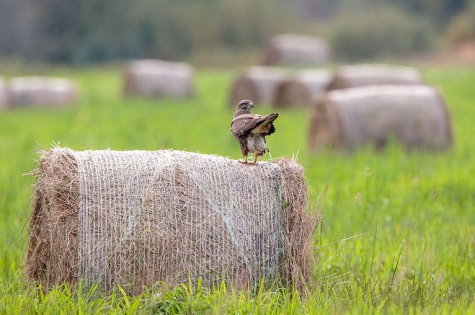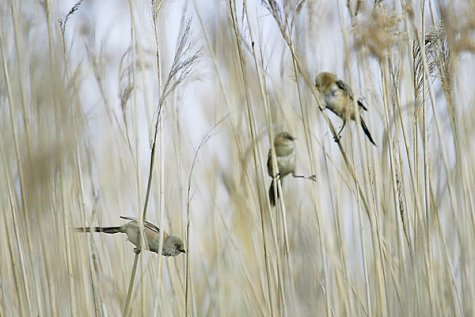EuroBirdwatch 2015 final results
Photos Arne Ader
Translation Liis
Barnacle geese
On the international birdwatching days on October 3-4, the EuroBirdwatch 2015, more than 220 000 birds from 153 species were counted in Estonia.
Compared to earlier years the results were modest. More than a hundred watching forms were sent to the Estonian Ornithological Society and almost four hundred bird enthusiasts had participated in creating them.
On the birdwatching days the largest numbers were counted of barnacle geese (more than 65000), Anser geese (32500), chaffinches (16000), lapwings (12000) and bramblings (7300). Among the most frequently seen species great tit and hooded crow dominated, followed by jay, magpie, raven, blackbird and fieldfare.
Buzzard
Of the current Birds of the Year, 10 rough-legged buzzards and 190 common buzzards were counted, 29 of the latter in Lao in Pärnu County on migration.
Among remarkable birds seen there on migration were also 21 sparrowhawks, more than 1400 common wood-pigeons, 25 black woodpeckers, 73 bearded tits and one serin. Most interesting at Kabli bird station in Pärnu county were the migration of 2400 meadow pipits and the mass movements of chaffinches, bramblings, reed buntings. Two late tree pipits were also seen.
At the Põõsaspea observation site in Lääne County 770 pipits and more than 5000 long-tailed ducks were counted during the two days; among interesting species purple sandpipers, rock pipits, razorbills and guillemots were seen.
Bearded tits
In Hiiumaa the most interesting observations were 7 little grebes and 52 great egrets, in Saaremaa 3000 white-fronted geese in the Kuressaare bay. In Viru county more than 20 000 barnacle geese were counted, in Mehikoorma and vicinity in Tartu county the observers saw 16 white-tailed eagles, and among interesting species grey plover, broad-billed sandpiper and snow bunting.
Also among interesting species on the birdwatching days were corncrake, red-breasted goose, shelduck, terns, redstart and Lapland bunting; surprisingly many penduline tits and bearded tits were seen and a few swallows and white storks were also noted in places.
Moreover a hybrid Branta goose, a leucistic greater whitefronted goose and a white-winged house sparrow were seen.
The longest list of species this year was achieved by members of the Estbirding club who saw 111 bird species during 2 days in Lääne county. 88 species each were seen by Ingrid and Imre Aus in Harju and Rapla county and Andrus Jair and Kaido Nei in western Estonia.
41 countries from Europe and neighbouring areas participated in the international birdwatching days that took place for the 22nd time. Nearly 33 000 bird friends took part in the event and counted more than 5 million birds. In many countries rarities were also seen: for instance in Latvia Pallas’s warbler and firecrest, in Finland dusky warbler, Eastern stonechat and spotted pipit. Next year the international birdwatching days will be on October 1-2.
The Estonian Ornithological Society thanks all viewers, the organisers and guides of the birdwatches, and Kristjan Adojaan and OÜ 5D Vision who created the online observation form.
See the final species list from the birdwatching days on the EOÜ Internet site:
www.eoy.ee (in Estonian, list includes Latin names)
www.eoy.ee (in Estonian, list includes Latin names)
Additional information
Riho Kinks, Education and information specialist
Riho Kinks, Education and information specialist
Riho.kinks@eoy.ee
508 6690
508 6690











